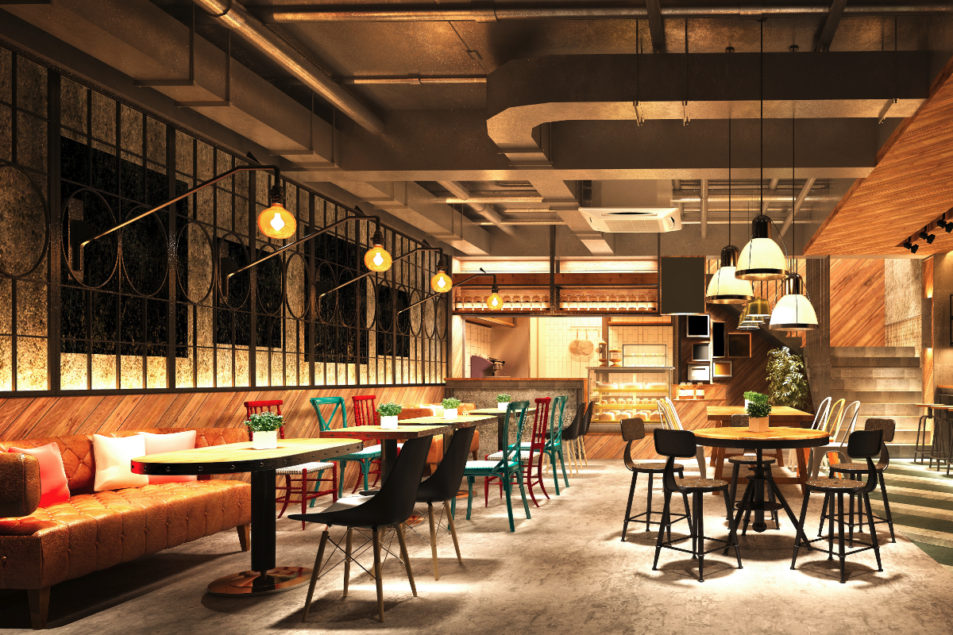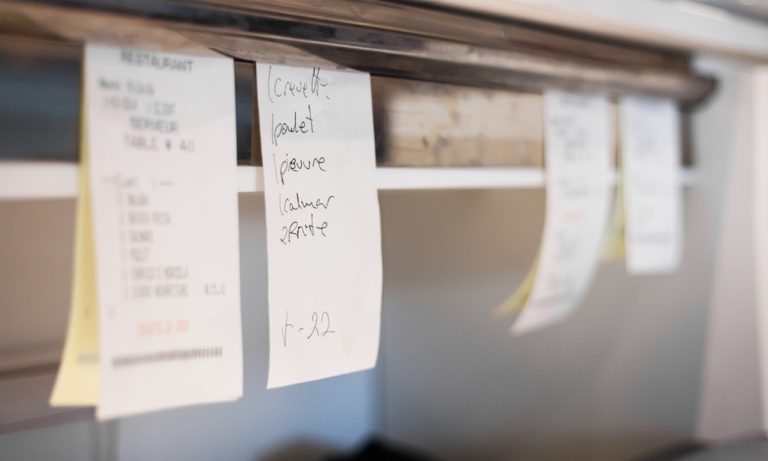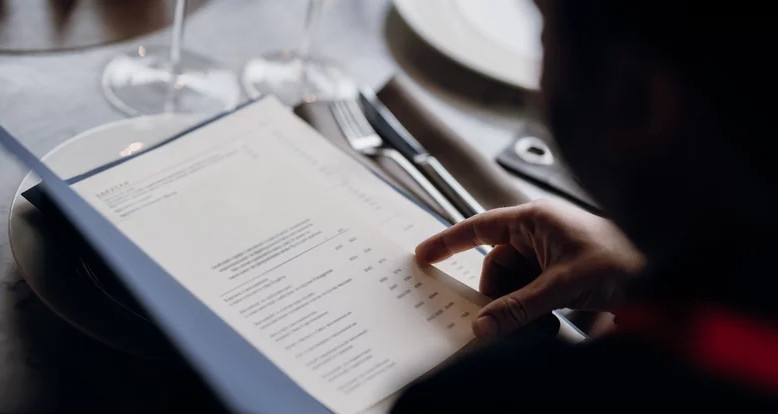20 Most Common Restaurant Complaints & How To Respond to Them
A successful restaurant’s management requires a skill that extends beyond culinary knowledge. It entails providing outstanding dining experiences, upholding flawless service standards, and deftly handling customer feedback. No matter how fantastic your restaurant is, guests may occasionally express unhappiness or concerns in the fast-paced hospitality business. It’s essential to respond to these concerns immediately to keep customers happy and preserve your restaurant’s image.
But responding to complaints entails more than just fixing the immediate problem. Empathy, attentive listening, and a dedication to exceeding client expectations are necessary. We offer practical advice and techniques to assist you in handling complaints in a professional, sympathetic, and customer-focused manner. What’s more we show you how restaurant feedback system may help.
In this article, we’ll be examining 20 restaurant complaints and offer helpful advice on how to approach each situation. You may turn unfavorable encounters into opportunities for customer retention and loyalty by implementing sensible measures.
What are the Most Common Restaurant Complaints Customers Have?

There are a few general issues that guests frequently voice at restaurants, even though precise complaints can vary from one business to another. Here is the common restaurant complaints list:
- Slow Service: Poor service usually includes long wait times for food or drinks, delays in receiving orders, or inattentive staff.
- Cold/Undercooked Food: Complaints about the food served at incorrect temperatures or not being cooked to the desired level of doneness.
- Poor Food Quality: Issues with taste, flavor, texture, or overall quality of the dishes.
- Incorrect Orders: Customers receiving the wrong food or beverage items or items missing from their orders.
- Unsanitary Conditions: Complaints about dirty tables, utensils, or restrooms, as well as overall cleanliness issues.
- Noise Levels: Excessive noise from the kitchen, music, or other customers disrupts the dining experience.
- Overcrowding/Crowded Seating: Customers feeling cramped or uncomfortable due to overcrowded seating arrangements.
- Lack of Menu Variety or Options for Dietary Restrictions: Complaints about limited choices for vegetarian, vegan, gluten-free, or other dietary preferences.
- Pricing and Poor Value: Customers feeling that the prices are too high for the quality and portion sizes offered.
- Unfriendly or Inattentive Staff: Complaints about rude, unhelpful, or inattentive servers or staff members.
- Long Waits for Tables: Customers frustrated by lengthy wait times for seating, especially without proper updates, or dishes not arriving in a timely manner.
- Poor Hygiene Practices: Concerns regarding staff members not following proper hygiene practices, such as not wearing food service gloves or handling food in an unsanitary manner.
- Lack of Communication: Issues with poor communication between staff members and customers, leading to confusion or misunderstandings.
- Difficulties with Reservations: Problems related to reservations, including mishandled bookings, long waits despite reservations or lack of availability.
- Inadequate Portions: Complaints about portion sizes needing to be bigger or matching the menu descriptions.
- Unresolved Complaints: Customers felt that the restaurant did not adequately address or resolve their complaints or concerns.
- Inconsistent Service: Inconsistencies in service quality, such as excellent experiences on some visits but poor experiences on others.
- Allergen Cross-Contamination: Issues related to cross-contamination of allergens, causing concerns for customers with food allergies or intolerances.
- Lack of Authenticity: Complaints about restaurants claiming to serve authentic cuisine but falling short in taste, ingredients, or preparation methods.
- Limited Parking or Accessibility: Challenges related to parking availability, accessibility for customers with disabilities, or inconvenient location.
How Should You React to Restaurant Complaints?

Addressing customer complaints effectively is crucial for maintaining customer satisfaction and preserving your restaurant’s reputation. Here are some guidelines on how to react and respond to common customer complaints:
Slow Service

- Apologize sincerely for the delay and express your understanding of their frustration.
- Communicate with the kitchen and staff to expedite their order and ensure prompt service.
- Offer a complimentary drink, appetizer, or dessert as a gesture of goodwill.
- Thank the customer for their patience and assure them that their satisfaction is a priority.
Response Example:
“ We apologize for the delay you experienced during your visit. We understand that efficient service is crucial to providing a positive dining experience, and we wholeheartedly apologize for falling short of your expectations. ”
Cold/Undercooked Food
- Apologize for the inconvenience and assure the customer that this is not the norm.
- Offer to promptly re-cook or replace the dish and ensure it meets their expectations.
- Express gratitude for bringing the issue to your attention and emphasize your commitment to quality.
Response Example:
“ We deeply apologize for serving you a cold/undercooked dish at our restaurant. We work to ensure our meals are correctly prepared. Therefore we sincerely apologize if we didn’t meet your expectations. ”
Poor Food Quality

- Listen attentively to the customer’s complaint and concerns.
- Offer a sincere apology and assure them their feedback will be shared with the kitchen team.
- If appropriate, offer a replacement dish or an alternative option that meets their preferences.
- Take the opportunity to explain your commitment to high-quality ingredients and culinary excellence.
Response Example:
“We deeply regret that you experienced poor food quality during your recent visit to our restaurant. We pride ourselves on serving delicious and satisfying meals, and we sincerely apologize for not meeting your expectations on this occasion. To show our commitment, we would like to offer you a complimentary meal on your next visit.”
Incorrect Orders

- Apologize for the mistake and take responsibility for the mix-up.
- Offer to quickly rectify the order and ensure the correct items are served.
- Consider providing a complimentary item or discount on the bill as a gesture of apology.
- Thank the customer for their understanding and patience.
Response Example:
“We value your feedback and would like to make things right. If you give us another chance to serve you, we’ll ensure your order is prepared just as you requested. Your satisfaction is our top priority, and we’re dedicated to giving you a fantastic eating experience.”
Unsanitary Conditions
- Apologize for the lapse in cleanliness and assure the customer that their feedback is taken seriously.
- Address the issue immediately by cleaning the affected area or resolving the problem.
- Reiterate your commitment to maintaining a clean and hygienic environment.
- Offer reassurance that the issue will be addressed to prevent a recurrence.
Response Example:
“We are extremely sorry to hear about the unsanitary conditions you encountered during your recent visit to our restaurant. Providing a clean and safe environment for our guests is of the utmost importance to us, and we sincerely apologize for falling short of your expectations. We appreciate you bringing this to our notice, and we appreciate your business and hope to earn your trust again and continue to provide you with excellent service in the future.”
Noise Levels

- Acknowledge the customer’s complaint regarding noise levels.
- If available, offer to relocate them to a quieter area or adjust the music volume.
- Express your understanding and emphasize your commitment to providing a comfortable dining experience.
Response Example:
“We apologize for the restaurant being exceptionally loud today. We recognize that a quiet dining setting is crucial for a nice experience, and we are truly sorry if we fell short of your expectations in this regard.”
Overcrowding/Crowded Seating

- Apologize for any inconvenience caused by overcrowded seating.
- Offer alternatives, such as seating at the bar or a complimentary drink while they wait for a suitable table.
- Explain any extenuating circumstances and assure customers that their comfort is a priority.
Response Example:
“Your feedback is highly valued, and we want you to know that we are deeply sorry for the inconvenience. We are reassessing our table arrangements, seating capacity, and reservation management processes to ensure a more comfortable and enjoyable dining experience for all of our guests.”
Lack of Menu Variety or Options for Dietary Restrictions

- Apologize for the limited choices and express your commitment to catering to various dietary preferences.
- Offer alternative options or modifications to accommodate their nutritional needs.
- Take note of their feedback for future menu improvements and thank them for bringing it to your attention.
Response Example:
“We apologize for our menu not meeting your expectations. Your feedback is greatly appreciated, and as a token of our commitment to your satisfaction, we would like to offer you a complimentary meal on your next visit. This will allow you to experience the positive changes we are implementing and witness the increased menu variety we are striving for.”
Pricing and Value
- When a customer complains about pricing or valve, listen attentively to their concerns.
- Provide a clear explanation of the factors contributing to pricing, such as quality ingredients or skilled chefs.
- Suggest menu items that offer excellent value or provide a special offer or discount if appropriate.
- Emphasize the overall dining experience and value-added services your restaurant offers.
Response Example:
“We want to reassure you that we work hard to provide a menu that is a well-balanced blend of quality, flavor, and value. We choose the best ingredients, work with talented chefs, and try to create a setting that enhances your dining experience. While we try to offer fair pricing, we also consider the expenses of upholding our dedication to excellence.”
Unfriendly or Inattentive Staff

- This is often a major concern, as staff are on the front lines when working with clients. Make sure that they (and you) apologize for any behavior that did not meet their expectations.
- Inform the customer directly that you’re dealing with the issue with your team, and that you’ll provide proper training if necessary.
- Reiterate your commitment to exceptional service and assure the customer that their experience will improve.
- Remember, when responding to customer complaints, remain calm, empathetic, and professional. Act promptly to address the issue, take responsibility when necessary, and always express gratitude for the customer’s feedback.
Response Example:
“We apologize for the unfriendly or inattentive behavior exhibited by our staff during your recent visit. Delivering exceptional restaurant service and creating a positive dining experience is at the core of our values, and we deeply regret any negative impact caused. We can guarantee you that to prevent any further incidents of unwelcoming or careless behavior, we are immediately improving employee training and communication.”
Where can I see Customer Reviews?
Reviews provide valuable feedback from diners and can significantly influence a potential customer’s decision. If you’re wondering where you can see restaurant customer reviews, this guide is here to help. From popular online review websites to social media platforms and dedicated restaurant feedback systems, reviews can be found in many places.
Online Review Sites
Review sites have several features, a user base, and a community of reviewers. Restaurant owners who have their businesses listed on these sites can gather insights from customers and respond to restaurant complaints and praises. Here are the most popular restaurant review sites:
- Yelp: Yelp is a well-known website where users can find, evaluate, and suggest businesses, including restaurants. It is well renowned for its restaurant evaluations and rankings but also offers information on hotels, shopping, cosmetic products, and other industries. Users may share their stories, give companies a rating out of five, and write in-depth reviews about their trips on Yelp.
- TripAdvisor: Tripadvisor is a well-known online travel resource that offers details, opinions, and suggestions for various establishments involved in travel, including restaurants. It provides a wide range of tools and services to aid visitors in making travel plans, locating lodging, and finding eateries in their intended locations.
- Google My Business: Google My Business is a free online platform that enables companies to manage their internet presence on Google, including restaurants. It offers a central platform where restaurant owners may build and update their business listings to ensure that correct and current information is presented on Google Search and Google Maps.
Social Media Platforms
Social media platforms aren’t just for sharing and liking posts—in fact, diners often first go to a restaurant’s social media profile to leave reviews, as business owners are more likely to respond to them. Additionally, leaving restaurant complaints on a business’ social media platform can make them more visible to potential clients and to the friends and family of the person posting. Social listening tools can help brands understand what their customers are saying about them online. Here are the most popular social media platforms guests use to leave feedback on their dining experiences:
- Facebook: Facebook is a well-known social media network that provides restaurants with several tools and opportunities to engage with their consumers and advertise their establishments.
- Instagram: Instagram is a social media network specializing in visual material. Businesses may use it to highlight their menu items, interior design, and overall eating experience.
- Twitter: Twitter is a social networking site where users can interact and submit brief messages. Restaurants can use Twitter to convey immediate information to their followers and give them real-time updates. This can involve announcing daily deals, specials, events, or any other urgent information that might prompt quick action.
Dedicated Restaurant Feedback Systems
Restaurant feedback systems are often one of many features found in a food ordering system, which are used by restaurants to take orders, collect customer data, market their business and so much more. Here are a few restaurant feedback systems that allow restaurants to collect and manage reviews themselves:
- UpMenu: UpMenu is an all-in-one restaurant management system that allows restaurant owners to collect and share customer feedback on their websites. It is also used to create restaurant websites, menus, and ordering apps. Additionally, UpMenu helps restaurant owners track sales, manage food deliveries, and so much more.
- GuestRevu: GuestRevu offers features and tools that assist restaurant owners in gathering and analyzing customer feedback, managing online reviews, and enhancing the entire customer experience.
- Zingle: Zingle is available for various industries, including food service and hotels. It works as a message and communication platform for customers. It provides businesses with a practical means of contacting customers via text, improving customer service, and streamlining processes.
What can you do to Prevent Restaurant Complaints in the Future?
While avoiding negative restaurant reviews altogether is impossible, you can take proactive steps to minimize them and mitigate their impact. Here are some strategies to help you avoid negative reviews:
- Provide Consistent Quality: Consistency is critical to ensuring positive customer experiences. Focus on consistently delivering high-quality food, excellent service, and a welcoming atmosphere. Train your staff to maintain consistent standards and address any issues promptly in accordance with the restaurant SOP (Standard Operating Procedures) .
- Set Realistic Expectations: Be transparent about your restaurant’s cuisine offerings, portion sizes, pricing, and wait times. Avoid overpromising and under delivering, which can lead to disappointment and negative reviews. Accurately portray your restaurant’s strengths and limitations to manage customer expectations.
- Train and Empower Your Staff: Invest in comprehensive training for your staff to ensure they have the necessary skills and knowledge to provide exceptional service. Encourage open communication, active listening, and problem-solving skills to address customer concerns on the spot.
- Actively Seek Feedback: Create opportunities for customers to provide feedback during their dining experiences, such as comment cards or feedback forms. This allows you to address any issues immediately and potentially prevent negative reviews. Encourage feedback and actively listen to customer suggestions and concerns.
- Respond to Feedback: Promptly respond to customer feedback, both positive and negative, whether it’s in person, through online platforms, or via feedback channels. Acknowledge the feedback, apologize if necessary, and take appropriate actions to address any issues. Responding promptly and professionally demonstrates your commitment to customer satisfaction.
- Foster a Positive Online Presence: Actively engage with customers on social media platforms and respond to their comments, questions, and concerns. Share positive stories, updates, and promotions to create a positive online presence encouraging customers to leave positive reviews.
- Learn from Feedback: Treat negative reviews as an opportunity for improvement. Analyze recurring complaints from reviews and restaurant survey questions and use them as insights to enhance your operations, menu, or service. Implement changes based on feedback to evolve and meet customer expectations continually.
Key Takeaways
- No matter what you do, it’s impossible to prevent restaurant complaints completely.
- Learning from negative customer feedback is the best solution to avoid it in the future.
- Not responding to previous restaurant complaints can cost you more backlash and significantly hurt your reputation.
- Your staff is on the front lines with your customers—ensure they’re well-trained and know how to deal with complaints.










